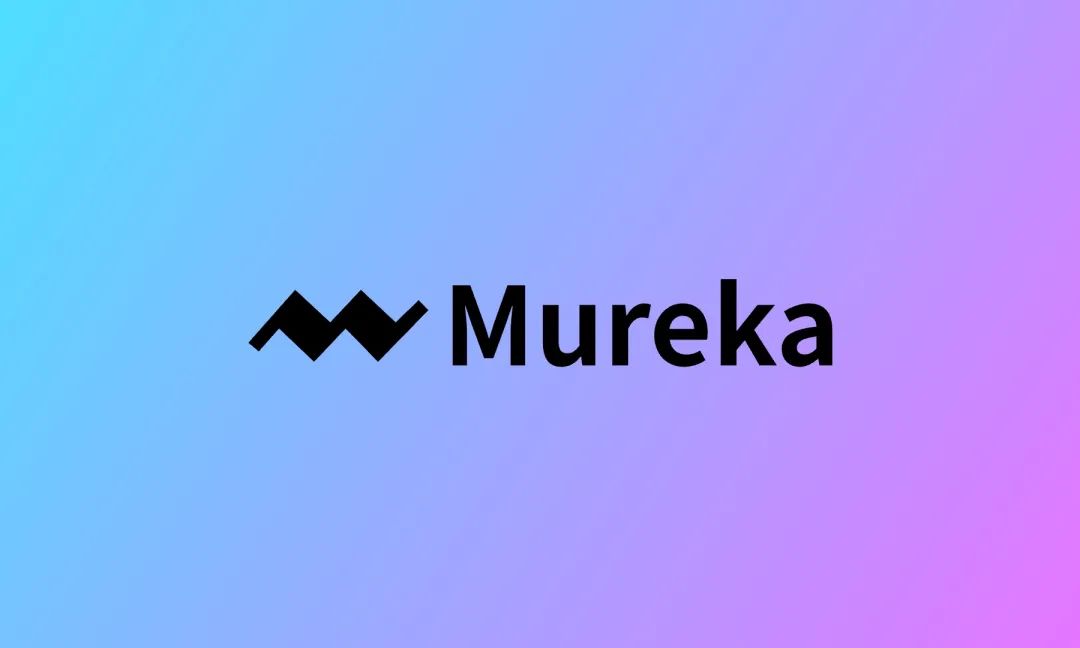
英伟达(Nvidia)通过销售为生成式人工智能淘金热提供动力的镐和铲,赚取了数十亿美元。对英伟达专用芯片图形处理器(GPU)的需求激增,使该公司股价在两年内飙升近11倍。
然而,英伟达深知,仅凭销售价值数万美元的图形处理器来搭乘当前的人工智能热潮并非长久之计。英伟达必须成为推动下一波人工智能浪潮的关键力量。
英伟达首席执行官黄仁勋周一深入阐述了这一战略,将其归结为抓住即将到来的“机器人领域ChatGPT时刻”(OpenAI的热门人工智能助手ChatGPT引领了当前人工智能热潮)。在拉斯维加斯举行的国际消费电子展(CES)上,他推出了一款名为Cosmos的人工智能平台,该平台搭载了由2000万小时真实机器人和驾驶视频训练的生成式人工智能模型。这些模型专为与英伟达的仿真技术协同工作而设计,旨在推动自动驾驶汽车和机器人等物理人工智能系统取得突破性进展。
开发人员能够借助Cosmos平台来生成高度仿真的、基于物理的合成数据,本质上是创建逼真的虚拟环境来训练和测试他们的系统,而无需收集大量真实世界的数据。众所周知,训练这些系统需要大量难以获取的数据,比如人形机器人执行各种可能动作的视频,或难以重现的自动驾驶场景,如雪地道路和交通事故,因此创建用于训练这些系统的数据集一直是个难题。由Cosmos和英伟达的Omniverse仿真技术生成的视频可以显示机器人可能采取的所有路径,助力其选择最优且最精准的动作。英伟达仿真技术副总裁雷夫·勒巴雷迪安(Rev Lebaredian)向《财富》杂志表示:“对于那些需要整理数亿小时数据的自动驾驶汽车和机器人公司而言,这无疑会改变游戏规则。”
Cosmos周一在广受欢迎的Hugging Face社区上以开源形式发布。
英伟达表示,许多顶级机器人和自动驾驶汽车公司已成为其Cosmos平台的早期采用者,包括优步(Uber),Figure和Agility Robotics等热门机器人初创公司,以及加拿大无人驾驶卡车初创公司Waabi和总部位于伦敦的自动驾驶技术公司Wayve等资金雄厚的公司。为了消除潜在客户对竞争的担忧,勒巴雷迪安强调,英伟达没有销售自己的机器人和自动驾驶汽车的计划。他说:“英伟达的目标并非制造机器人,而是致力于提供[其他公司]制造机器人所需的计算机、工具和技术。”
当然,英伟达将继续销售图形处理器和软件,以满足OpenAI、Meta、谷歌(Google)、Anthropic、微软(Microsoft)、亚马逊(Amazon)和埃隆·马斯克(Elon Musk)旗下的X公司在持续进行的人工智能主导权争夺战中对算力的需求。这一新战略的核心在于推动英伟达未来的持续增长,并为该公司已经飙升的股价增添新动力。周一,英伟达的股价接近149.43美元的历史高点。
研究公司Futurum Group的首席执行官丹尼尔·纽曼(Daniel Newman)表示,英伟达在国际消费电子展上发布的Cosmos平台以及其他产品有望为该公司带来巨大收益。他称Cosmos平台是客户开发下一代机器人,尤其是人形机器人的“关键赋能者”,并表示“未来十年,这一领域将有价值数万亿美元的市场机遇”。
勒巴雷迪安表示,英伟达在过去十年通过开发涵盖人工智能软件、硬件、机器人和自动驾驶汽车模拟计算机的生态系统,为Cosmos平台的问世奠定了基础。他指出,如今的变化在于这一新市场终于要腾飞了。勒巴雷迪安说:“我们相信,如果这个市场存在,我们将从中受益。为了让它存在,我们需要为生态系统提供所有工具,并为其创造启动契机。”
这已成为英伟达一贯秉持的策略,分析人士认为这正是英伟达在过去三十年里能够崛起的核心要素。长期以来,该公司始终强调,它并非如许多人所认为的那样,仅仅是一家芯片公司,甚至也不仅仅是一家硬件制造商。相反,英伟达将自己定位为一家专注于“加速计算”的公司,致力于研发软件及相关技术以吸引开发者。
2007年,英伟达开发了CUDA软件,使研究人员能够更轻松地使用该公司的图形处理器。英伟达公司内外的专家都表示,此举推动了2010年代早期的人工智能和深度学习革命。2019年,英伟达首次推出了开源人工智能系统Megatron。该系统通过展示训练大规模模型的技术,并对诸如ChatGPT底层架构等人工智能领域的进展产生影响,为包括OpenAI在内的公司在大型语言模型研发方面取得突破做出贡献。如果没有Megatron,“我们或许至今仍未能迎来ChatGPT时刻,”勒巴雷迪安说。
勒巴雷迪安补充说,Cosmos平台的出现正值其他公司开始在工厂、仓库和街道上部署机器人和自动驾驶汽车车队的时刻,或者说“拐点”。不过,该平台还有很长的路要走:他解释说,要全面“理解”现实世界的方方面面,还需构建一个强大得多的平台。
当然,勒巴雷迪安还表示,图形处理器仍是英伟达的王牌,至少在现阶段是如此。他说:“与我们目前的数据中心销售相比,一切都显得微不足道。”
然而,机器人领域的“ChatGPT时刻”能否惠及包括英伟达在内的整个行业,还有待观察。幸运的是,对于英伟达而言,即便矿工们从未真正挖到金子,仅仅是出售镐和铲也能让英伟达获利,纽曼说:“正如生成式人工智能在硬件之外的盈利模式尚不明朗一样,但无论如何,英伟达都能从中获益。”(财富中文网)
译者:中慧言-王芳
英伟达(Nvidia)通过销售为生成式人工智能淘金热提供动力的镐和铲,赚取了数十亿美元。对英伟达专用芯片图形处理器(GPU)的需求激增,使该公司股价在两年内飙升近11倍。
然而,英伟达深知,仅凭销售价值数万美元的图形处理器来搭乘当前的人工智能热潮并非长久之计。英伟达必须成为推动下一波人工智能浪潮的关键力量。
英伟达首席执行官黄仁勋周一深入阐述了这一战略,将其归结为抓住即将到来的“机器人领域ChatGPT时刻”(OpenAI的热门人工智能助手ChatGPT引领了当前人工智能热潮)。在拉斯维加斯举行的国际消费电子展(CES)上,他推出了一款名为Cosmos的人工智能平台,该平台搭载了由2000万小时真实机器人和驾驶视频训练的生成式人工智能模型。这些模型专为与英伟达的仿真技术协同工作而设计,旨在推动自动驾驶汽车和机器人等物理人工智能系统取得突破性进展。
开发人员能够借助Cosmos平台来生成高度仿真的、基于物理的合成数据,本质上是创建逼真的虚拟环境来训练和测试他们的系统,而无需收集大量真实世界的数据。众所周知,训练这些系统需要大量难以获取的数据,比如人形机器人执行各种可能动作的视频,或难以重现的自动驾驶场景,如雪地道路和交通事故,因此创建用于训练这些系统的数据集一直是个难题。由Cosmos和英伟达的Omniverse仿真技术生成的视频可以显示机器人可能采取的所有路径,助力其选择最优且最精准的动作。英伟达仿真技术副总裁雷夫·勒巴雷迪安(Rev Lebaredian)向《财富》杂志表示:“对于那些需要整理数亿小时数据的自动驾驶汽车和机器人公司而言,这无疑会改变游戏规则。”
Cosmos周一在广受欢迎的Hugging Face社区上以开源形式发布。
英伟达表示,许多顶级机器人和自动驾驶汽车公司已成为其Cosmos平台的早期采用者,包括优步(Uber),Figure和Agility Robotics等热门机器人初创公司,以及加拿大无人驾驶卡车初创公司Waabi和总部位于伦敦的自动驾驶技术公司Wayve等资金雄厚的公司。为了消除潜在客户对竞争的担忧,勒巴雷迪安强调,英伟达没有销售自己的机器人和自动驾驶汽车的计划。他说:“英伟达的目标并非制造机器人,而是致力于提供[其他公司]制造机器人所需的计算机、工具和技术。”
当然,英伟达将继续销售图形处理器和软件,以满足OpenAI、Meta、谷歌(Google)、Anthropic、微软(Microsoft)、亚马逊(Amazon)和埃隆·马斯克(Elon Musk)旗下的X公司在持续进行的人工智能主导权争夺战中对算力的需求。这一新战略的核心在于推动英伟达未来的持续增长,并为该公司已经飙升的股价增添新动力。周一,英伟达的股价接近149.43美元的历史高点。
研究公司Futurum Group的首席执行官丹尼尔·纽曼(Daniel Newman)表示,英伟达在国际消费电子展上发布的Cosmos平台以及其他产品有望为该公司带来巨大收益。他称Cosmos平台是客户开发下一代机器人,尤其是人形机器人的“关键赋能者”,并表示“未来十年,这一领域将有价值数万亿美元的市场机遇”。
勒巴雷迪安表示,英伟达在过去十年通过开发涵盖人工智能软件、硬件、机器人和自动驾驶汽车模拟计算机的生态系统,为Cosmos平台的问世奠定了基础。他指出,如今的变化在于这一新市场终于要腾飞了。勒巴雷迪安说:“我们相信,如果这个市场存在,我们将从中受益。为了让它存在,我们需要为生态系统提供所有工具,并为其创造启动契机。”
这已成为英伟达一贯秉持的策略,分析人士认为这正是英伟达在过去三十年里能够崛起的核心要素。长期以来,该公司始终强调,它并非如许多人所认为的那样,仅仅是一家芯片公司,甚至也不仅仅是一家硬件制造商。相反,英伟达将自己定位为一家专注于“加速计算”的公司,致力于研发软件及相关技术以吸引开发者。
2007年,英伟达开发了CUDA软件,使研究人员能够更轻松地使用该公司的图形处理器。英伟达公司内外的专家都表示,此举推动了2010年代早期的人工智能和深度学习革命。2019年,英伟达首次推出了开源人工智能系统Megatron。该系统通过展示训练大规模模型的技术,并对诸如ChatGPT底层架构等人工智能领域的进展产生影响,为包括OpenAI在内的公司在大型语言模型研发方面取得突破做出贡献。如果没有Megatron,“我们或许至今仍未能迎来ChatGPT时刻,”勒巴雷迪安说。
勒巴雷迪安补充说,Cosmos平台的出现正值其他公司开始在工厂、仓库和街道上部署机器人和自动驾驶汽车车队的时刻,或者说“拐点”。不过,该平台还有很长的路要走:他解释说,要全面“理解”现实世界的方方面面,还需构建一个强大得多的平台。
当然,勒巴雷迪安还表示,图形处理器仍是英伟达的王牌,至少在现阶段是如此。他说:“与我们目前的数据中心销售相比,一切都显得微不足道。”
然而,机器人领域的“ChatGPT时刻”能否惠及包括英伟达在内的整个行业,还有待观察。幸运的是,对于英伟达而言,即便矿工们从未真正挖到金子,仅仅是出售镐和铲也能让英伟达获利,纽曼说:“正如生成式人工智能在硬件之外的盈利模式尚不明朗一样,但无论如何,英伟达都能从中获益。”(财富中文网)
译者:中慧言-王芳
Nvidia has made billions selling the picks and shovels powering the generative AI gold rush. Demand for Nvidia’s specialized chips, called GPUs, has boomed, sending the company’s stock soaring nearly 11-fold in two years.
But Nvidia knows it can’t just ride today’s AI wave forever, selling GPUs for tens of thousands of dollars each. It must help create the next wave.
Nvidia CEO Jensen Huang on Monday detailed that strategy, which boils down to seizing a coming “ChatGPT moment for robotics,” a reference to OpenAI’s buzzy AI assistant that kicked off the current AI craze. At the Consumer Electronics Show (CES) in Las Vegas, he announced Cosmos, an AI platform powered by generative AI models trained on 20 million hours of real-world robotics and driving videos. The models are specifically designed to work together with Nvidia’s simulation technology and drive breakthroughs in physical AI systems like self-driving cars and robots.
Developers can use Cosmos to generate highly-realistic, physics-based synthetic data—essentially creating lifelike virtual environments to train and test their systems without needing to gather massive amounts of real-world data. It’s notoriously difficult to create the datasets to train these systems because they require massive amounts of hard-to-get data, such as video of every possible humanoid robot movement or hard-to-replicate self-driving scenarios such as snowy roads and car accidents. Video generated by Cosmos and Nvidia’s Omniverse simulation technology could show every possible path a robot could take, helping it select the best and most accurate action. “This is absolutely game-changing for the AV and robotics companies out there that have hundreds of millions of hours of data that need to be curated,” Rev Lebaredian, vice president of simulation technology at Nvidia, told Fortune.
Cosmos was released Monday as open source on the popular Hugging Face community.
Nvidia said a number of top robotics and autonomous vehicle companies are already early adopters of its Cosmos technology, including Uber, hot robot startups like Figure and Agility Robotics, as well as highly-funded companies like Canadian driverless truck startup Waabi and London-based self-driving tech company Wayve. In an effort to tamp down any competitive concerns by potential customers, Lebaredian emphasized that Nvidia has no plans to sell its own robots and autonomous vehicles. “Nvidia is not going to create robots, we want to supply the computers and tooling and technology [others] need to build their robots,” he said.
Of course, Nvidia will continue to sell the GPUs and software to feed the computing power needs in the ongoing race for AI dominance among OpenAI, Meta, Google, Anthropic, Microsoft, Amazon and Elon Musk’s X. Rather, the new strategy is aimed at driving future growth and the company’s already super-charged stock, which was near a record high of $149.43 on Monday.
Daniel Newman, CEO of research firm Futurum Group, said Nvidia’s Cosmos and Nvidia’s other product announcements at CES could pay off in a big way for the company. He called Cosmos a “key enabler” for customers developing the next generation of robotics, especially humanoid robots, and a “multi-trillion dollar market opportunity over the next decade.”
Lebaredian said Nvidia has laid the groundwork for Cosmos by spending the last decade developing an ecosystem of AI software, hardware, simulation computers for robots and autonomous vehicles. What’s changed, he said, is that this new market is finally about to take off. “We believe that we will benefit if that market exists,” said Lebaredian. “In order for it to exist, we need to seed the ecosystem with all of the tools and give them a jump start.”
It is a familiar playbook for Nvidia, one that analysts have hailed as a key to Nvidia’s three-decade-long rise. The company has long emphasized that it’s not, as many people think, a chip company, or even a hardware company. Instead, it sees itself as an “accelerated computing” company that creates software and related technology to attract developers.
In 2007, Nvidia created CUDA, software that made it easier for researchers to use the company’s GPUs. Experts both inside and outside Nvidia say the move helped lead to the early AI and deep learning revolution of the 2010s. In 2019, Nvidia also debuted Megatron, an open source AI system that contributed to breakthroughs by companies in developing large language models, including OpenAI, by demonstrating techniques to train massive models and influencing AI advancements like the architecture underlying ChatGPT. Without Megatron, “we probably wouldn’t have had the ChatGPT moment,” said Lebaredian.
Cosmos, Lebaredian added, comes at a moment, or “inflection” point, when other companies are starting to deploy fleets of robots and autonomous vehicles in factories, warehouses, and on streets. Still, Cosmos has a long way to go: It would take a far more powerful platform to fully ‘understand’ every aspect of the real world, he explained,
And, of course, Lebaredian says that GPUs remain king at Nvidia, at least for now. “Everything is kind of just dwarfed by our data center sales right now,” he said.
However, whether robotics’ ChatGPT moment pays off for everyone in the industry, including Nvidia, remains to be seen. Luckily, for Nvidia selling picks and shovels pays off even if miners never strike gold, said Newman: “A little like how Gen AI monetization is less clear beyond hardware, Nvidia wins no matter what.”





